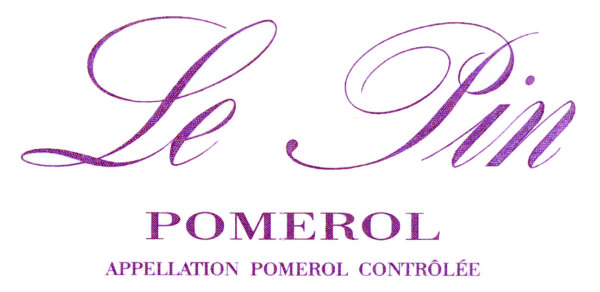Château Lalande
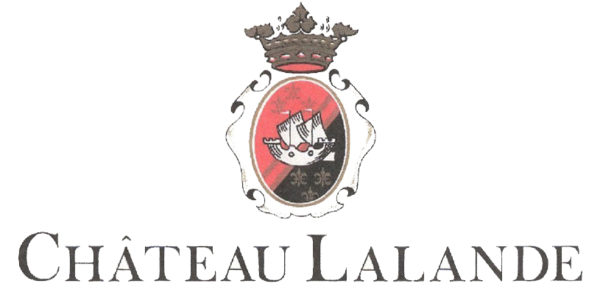
The Estate
Château Lalande is located in the municipality of Saint-Julien-Beychevelle, along the “road of wines” next to the estuary of the Gironde. The Grands Crus Château Talbot and Château Lagrange are its immediate neighbors. The owner is Jean-Paul Meffre, and the winemaking consultant is Christophe Ollivier.

Château Lalande Saint-Julien
Production Area: 15.50 ha
Average Age of the Vines: 25 years old
Grape Varieties: 50% Cabernet Sauvignon, 50% Merlot (percentages vary depending on the vintage)
Soil: Gravel and sandy soil
Plant Density: 6,666 vines/ha
Pruning: Guyot double
Harvesting: Mechanical and manual
Average Yield: 40 hl/ha
Production: 74,000 bottles
Vinification: Temperature control, maceration in cool conditions, 3 weeks of vatting (concrete and stainless), traceability monitoring, malolactic fermentation in vat.
Aging: 12 months in barrels, % of new oak depending on the vintage, selection of cooperages.
Tasting Notes: Beautiful garnet color. The nose opens on chocolate, woody, and fruity notes. On the palate, the attack is supple and pleasant with velvety and suave tannins.
Alcohol: 14%
Château Lalande-Borie
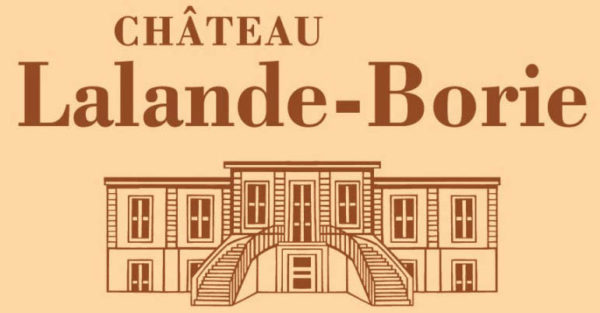
The Estate
Château Lalande Borie was founded in 1970 by Jean Eugene Borie on the Lalande terrior to which he added his family name and that he bought that same year from a classified growth in Saint Julien. Château Lalande Borie is located to the west of the Saint Julien appellation. The estate, set in the heart of terroirs of several renowned classified growth, consists of a large single plot of 25 hectares. Bruno Borie, famous for owning Chateau Ducru Beaucaillou along with other properties in Saint-Julien and Haut-Médoc, currently owns and manages the estate with his sister, Sabine Coiffe.

Château Lalande-Borie Saint-Julien
Production Area: 25 hectares
Grape Varieties: 65% Cabernet Sauvignon, 25% Merlot, and 10% Cabernet Franc (percentages differ depending on the vintage)
Plant Density: 8,500 vines per hectare
Viticulture: The vineyard is managed traditionally (Medoc, double Guyot pruning), while including the latest viticultural techniques including: leaf-thinning my hand, green harvests in summer, partial cover crop, control yields and application of sustainable phytosanitary treatments.
Harvest: All the grapes are harvested manually. Sorting is carried out directly in the vines on mobile tables to avoid contact between unhealthy and healthy grapes during transport to the vat room.
Vinification: Alcoholic fermentation takes place at relatively low temperatures (between 26-28°C) to optimize the fruity aromas of the wine. Pumping-over is gentle to avoid extracting too many tannins and obtain a pleasant fattiness. Malolatic fermentation of the free run wine and the press-wine (pneumatic pressing takes place in vats for optimal control.
Aging: The wine is placed in French oak barrels immediately after blending, with 20-30% new barrels used according to the vintage. Bottling is performed with special care in regard to both oenological controls and homogenization of the overall wine.
2015 Reviews: “A dense wine with great fruit, this has a velvet texture and great elegance. There is structure of course from the firm tannins that stay in the background, while the main thrust of this wine is its great blackberry fruit.”-92pts, Wine Enthusiast
2009 Reviews: “Rich and smooth, with tannins that are ripe, some spice and also intense acidity. The blackcurrant character is dominant.”-92pts, Wine Enthusiast
Château Lanessan
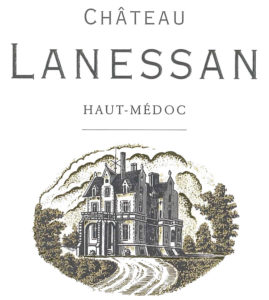
The Estate
Established in 1793 by Jean Delbos, the vineyard initially spanned 24 hectares, much smaller than its current size. The Tudor-style chateau was constructed in 1878. Today, Chateau Lanessan is owned by the Bouteiller family, who are direct descendants of founder Jean Delbos. Most vineyards in the Médoc have changed ownership multiple times, so it is unusual for an estate to have been maintained by the same family for so long. Hubert de Bouard, owner of Chateau Angelus, was brought in as a consultant starting with the 2015 vintage in order to increase the quality of production. In addition to its vineyards, Lanessan also has several stables which were constructed in the shape of a horseshoe, and a museum of historical carriages.

Château Lanessan Haut-Médoc
Production Area: 32 out of 80 hectares are planted with vines, the rest is reserved for forests, parkland, and horse trails.
Grape Varieties: Cabernet Sauvignon, Merlot, Petit Verdot (Percentages vary depending on the vintage)
Soil: Deep Garonne gravel
Average Age of the Vines: 30 years of age
Plant Density: 10,000 vines/hectare
Harvest: Mechanical harvest; sorting by eye
Vinification: The wine is fermented in coated concrete tanks with temperature control. Malolactic fermentation takes place in tank.
Maturation: The wine is aged for about 12 months in a combination of 33% new, 33% 1-year old, and 33% 2-year old French oak barrels.
Annual Production: 18,000 cases
Tasting Notes: The bouquet is complex and elegant. Good structure on the palate, with fleshy tannins and a lingering finish.
Château Langoa Barton
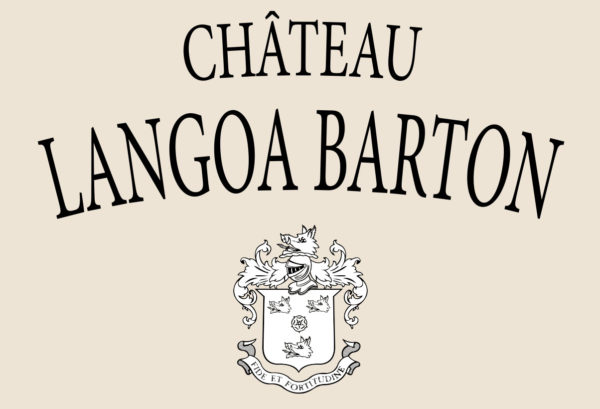
The Estate
Thomas Barton had been trading since the 1600s with Bordeaux, which was an important trading port on the Atlantic coast. He eventually left his native Ireland to settle in Bordeaux. In 1725, he created a négociant company and in 20 years became an influential figure of the wine trade; his reputation far exceeded the French and even European borders. His grand-son Hugh succeeded him in 1786, at the age of 20, and strengthened the family trading business. With his energy and efficiency, Hugh Barton consolidated his fortune and decided to acquire vineyards in the Médoc region. Château Langoa, an elegant house built in 1758, is the archetype of the Bordeaux style of the 18th century. Its architecture and harmonious proportions charmed Hugh, who acquired it in 1821 and renamed it “Château Langoa Barton”. Afterwards, 3 generations succeeded at the head of the vineyard, but it is thanks to Ronald Barton’s accomplishments that the integrity of the vineyard withstood the difficult years of the interwar period. The current owner, Anthony Barton, was born in Ireland and later joined his uncle in France in 1951 to integrate the trading house and assist him in the direction of the property. Today, the partnership between Anthony and his daughter, Lilian Barton-Sartorius, strengthens and enhances the international reputation of Langoa Barton. Melanie Barton-Sartorius, oenologist and Anthony’s granddaughter, represents the 10th generation of Bartons in Bordeaux.

Château Langoa Barton Saint-Julien 3ème Grand Cru Classé
Classification: 3e Grand Cru Classé in 1855
Appellation: Saint Julien
Production Area: 17 hectares
Grape Varieties: 57% Cabernet Sauvignon, 34% Merlot, 9% Cabernet Franc
Soil: Deep gravel on clay subsoil
Average Age of the Vines: 35 years old
Plantation Density: 9,100 feet per ha
Average Yield: 42 hl per ha
Vines: Traditional ploughing, no weed killing, reasoned additives. Double cane pruning adapted to the vigor of the vines. Manual harpening, topping, and reasoned de-leafing.
Harvest: Manual, followed by successive sortings of the grapes. De-stemming, crushing, and fermenting plot by plot.
Vinification: Wooden vats room with thermo-regulation system. Alcoholic fermentation lasting 7 to 10 days with twice daily pumping over. Maceration about 3 weeks. Drawing off into the barrels lot by lot.
Aging: 16-18 months in French oak barrels in a cellar kept at a constant temperature of 15°C. 50-70% new wood according to vintages. Topping 3 times a week. Barrel to barrel racking. Fining in the barrels with fresh egg whites.
Annual Production: Approx. 80,000 bottles
Consulting Oenologist: Jacques and Eric Boissenot
Château Larrivaux
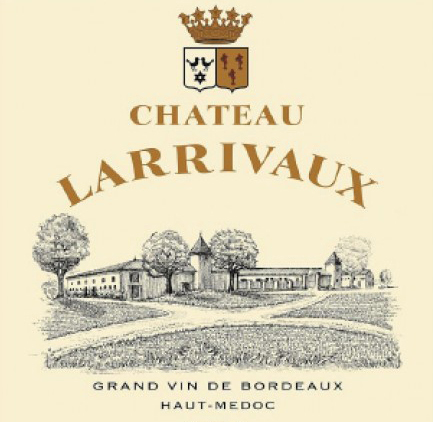
The Estate
Château Larrivaux is one of the few estates in Médoc to have belonged to the same family for 3 centuries. Ownership of the estate has been passed down through the female line of the family from generation to generation. In total, Château Larrivaux is a 100-hectare (250-acres) estate that includes woodlands, meadows, and abandoned quarries. The vineyard is well-oriented, planted on gravelly hillsides, with very favorable soils that are of the same consistency and quality as those of the great growths in neighboring Pauillac and Saint-Estèphe. The Chateau is now managed by Bérengère Tesseron, who married Basile Tesseron, owner of Lafon Rochet (4th Cru Classé St Estèphe) in 2008.
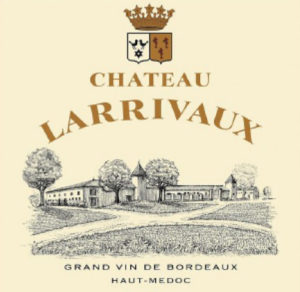
Château Larrivaux Haut-Médoc
Appellation: Haut-Médoc
Location: Cissac
Classification: Cru Bourgeois
Soil: Gravel, clay and chalk
Age of the Vineyard: 27 years
Size of the Vineyard: 18.6 ha
Grape Varieties: Merlot 61%, Cabernet Sauvignon 26%, Cabernet Franc 8%, Petit Verdot 5%
2014 Blend: Merlot 72%, Cabernet Sauvignon 17%, Cabernet Franc 7%, Petit Verdot 4%
Vinification: Grapes are mechanically harvested and destemmed. Wines are fermented for 21 days on the skins in stainless steel and cement tanks. Aging lasts 16 to 18 months in oak casks (30% new wood)
Tasting Notes: Deep ruby color, aromas of blackcurrant and licorice. Supple and well structured with elegant tannins. Well balanced and rich this wine offers a long finish. A powerful yet gentle wine. An ideal wine for the modern consumer who likes fresh tannins yet it can also age extremely well.
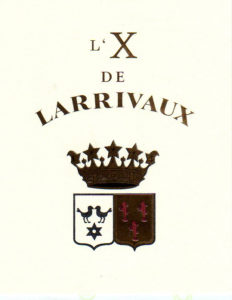
L'X de Larrivaux
Overview: This is the second wine of the estate. The name L’X de Larrivaux is simply the contraction of the first and last letter of the name Larrivaux.
Location: Cissac
Appellation: Haut Médoc
Soil: Gravel, clay, chalk
Vineyard Age: 27 years
2011 Production: 29,000 bottles
Grape Varietals: Merlot 61%, Cabernet Sauvignon 26%, Cabernet Franc 8%, Petit Verdot 5%
2011 Blend: Merlot 90%, Petit Verdot 7%, Cabernet Sauvignon 3%
Vinification: Grapes are mechanically harvested and de-stemmed. Wines are fermented for 21 days on the skins in stainless steel and cement tanks. Aging lasts 16 to 18 months in oak casks (30% new wood annually).
Production Area: 18 Hectares
Harvest Dates: September 2011
Tasting Notes: Deep ruby color, aromas of black current and licorice. Supple and well structured with elegant tannins. Well balanced and rich, this wine offers a long finish. A powerful yet gentle wine.
Oenologue: Eric Boissenot
Château Larrivet-Haut-Brion
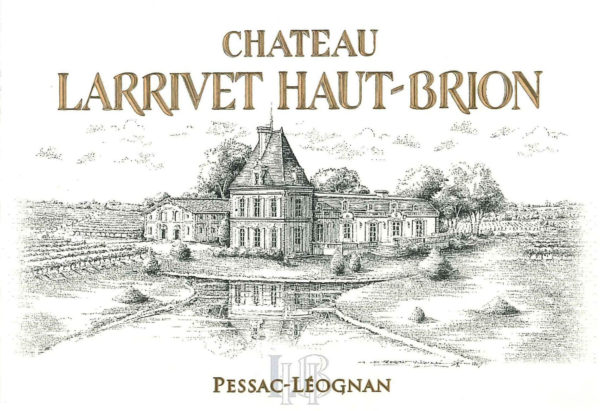
The Estate
Since 1840 –the year in which the Château was first mentioned among the first growths of Pessac-Léognan – till today, the fame of Château Larrivet Haut-Brion has continued growing. Called at various times Château de Canolle, La Rivette, and Château Brion-Larrivet, the estate was renamed Château Haut-Brion Larrivet by the owner Ernest Laurent (a Bordeaux négociant) in 1874.
In 1893, the estate was acquired by the Bordeaux ship owners, Les Fils de Théodor Conseil, who enlarged the vineyards to some 50 hectares.
Wine production was almost non-existent during the depression of the 1930s, at which time many vines were uprooted.
The property was given its current name, Château Larrivet Haut-Brion, in 1929 by Jacques Guillemaud (owner since 1941). Devoted and hard-working, he conscientiously managed the estate until 1982.
In 1987, Château Larrivet Haut-Brion was acquired by the Gervoson family, who set about recreating the grandeur of the Chateau. Currently, the Château is comprised of 17 hectares of vineyards, a wooded park of 13 hectares and other notable attributes, giving the Château an undisputed potential. In keeping with their dedication and attention to detail, Philippe and Christine Gervoson have succeeded in reestablishing the unity of the estate.
In just a few years, the area under vine has reached 72.5 hectares (11.5 hectares of white wine grapes and 61 of red) thanks to newly-planted plots and the purchase of neighboring vineyards. Assisted by a motivated and dedicated winemaking team, the owners continue to modernize infrastructures, reorganize the vineyards (based on a detailed soil survey), and make quality wines with a unique personality and characteristic elegance.
Availing the estate of his considerable expertise and ambitions, Bruno Lemoine took over his functions as Managing Director and Winemaker at Larrivet Haut-Brion in 2007. A respect for tradition and the important role played by women are part Château Larrivet Haut-Brion’s identity.
The team grew in 2009 to include Emilie Gervoson, one of the château owner’s three daughters, who represents a new epicurean generation anxious to be as professional as possible in all aspects of winemaking.

Château Larrivet-Haut-Brion Pessac-Leognan
Production Area: 75 hectares
Soil: Typical of the Graves de Bordeaux middle terrace. Very gravelly with a sand or clay matrix. Gravelly rises with excellent sun exposure and perfect drainage.
Grape Varieties: 50% Merlot, 45% Cabernet Sauvignon, and 5% Cabernet Franc
Average Age of the Vines: 25 years
Average Yield: 45 hectoliters/ha
Vine Density: 7,700 vines/ha
Harvest: The grapes are handpicked into small crates.
Vinification: One third in new French oak barrels and two thirds in barrels previously used to age one or two vintages for 14 to 18 months, depending on the year.
Aging: 10-11 months with regular bâtonnage (lees stirring with a stick)
2017 Reviews: “Barrel Sample. Ripe, juicy with plenty of black currant flavors, this wine has solid tannins as well. It has a good depth of flavor, its tannins well integrated into the juicy fruits. Drink from 2023.” – 93pts, Wine Enthusiast
“A more complicated vintage, one where you can see why Larrivet Haut-Brion has received so much praise in recent years because this is a well-handled wine. Tons of rich strawberries on the nose, a lighter vintage overall than the 2016 but it has grace and charm. Well handed, some expert winemaking on display, you can expect plenty of enjoyment from this over the next few years – but if you want a 2017, my money is on the white.” – 90pts, Decanter
“Deep garnet-purple in color, the 2017 Larrivet Haut-Brion leaps with kirsch, warm blueberries and black plums plus wafts of earth, herbs and cedar and a touch of tar. Medium-bodied, the palate is fine, fresh and delicately expressive, finishing long and savory.” – 92pts, Wine Advocate
“Ripe and focused, featuring a beam of cassis, plum and blackberry paste flavors, infused with black tea notes and framed by licorice root and apple wood accents. The grippy finish lets in a sweet tobacco hint. Cabernet Sauvignon, Merlot and Cabernet Franc. Best from 2022 through 2035.” – 92pts, Wine Spectator
2014 Reviews: “Spice, fruit and a rich texture combine to give this wine a wonderful balance and style. As it develops, it is going to have moderate weight and serious intensity.” – 95pts, Wine Enthusiast
Château Lascombes
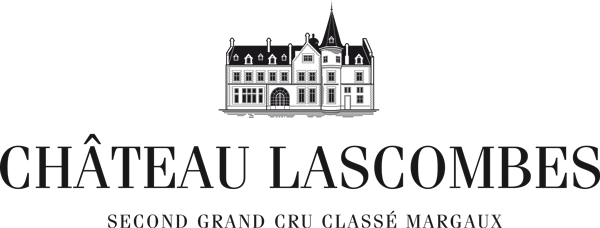
The Estate
Chateau Lascombes has its origins in the 17th century. Antoine Chevalier de Lascombes was born in 1625 and inherited the estate from the Durfort de Duras family, owners of Chateau Durfort (later Durfort Vivens). Known as Domaine de Lascombes until 1860, the estate passed through many hands over the years. Indeed, during World War II Lascombes became the headquarters for the Allied forces. The estate was bought in 1952 by a group of wealthy investors, including Alexis Lichine and David Rockefeller, under whose ownership the volume of production almost tripled.
Lascombes was purchased in 2001 for $67 million by US-based Colony Capital group and was promptly fixed up after years of neglect. About $47 million was spent to renovate, which included the replanting of the vineyards and construction of a new winemaking facility. Colony Capital also brought in 3 consultants to help improve the winemaking process—Michel Rolland, Dr. Alain Raynaud, and Yves Vatelot of Chateau Reignac. The company later sold the property in July of 2011 for almost $300,000,000 to La Mutuelle, the largest insurer of health professionals in France.

Chevalier de Lascombes Margaux
Overview: First introduced in 1997 by then winemaker Rene Vanatelle, Chevalier de Lascombes is the second wine of Chateau Lascombes.
Production Area: 117 hectares (largest vineyard in Margaux)
Grape Varieties: 50% Merlot, 45% Cabernet Sauvignon, 5% Petit Verdot
Average Age of the Vines: 35 years old
Plant Density: 8,000-10,000 vines/hectare
Terroir: Gravel, clay, sand, and limestone over a subsoil of sandstone and clay with iron deposits.
Vinification: Takes place in a combination of wood and stainless steel vats.
Aging: 80% new French oak barrels for 18 months
Château Latour (Biodynamic)
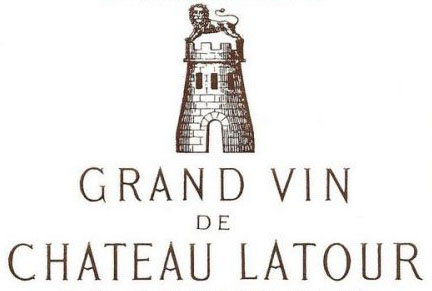
The Estate :
Château Latour is located in the heart of the Médoc wine region, about 50 km north-west of Bordeaux, where the legend of the vineyards of Bordeaux began. The oldest document mentioning Latour dates from 1331. Château Latour then appears in the Jean Froissart’s « Chronicles » in 1378. This was the time of the Hundred Years War and the « Tour de Saint Maubert » was a fortress to guard the estuary, manned by Breton soldiers for the King of France.
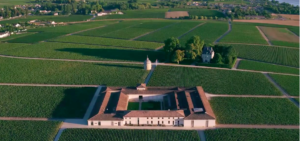
The Terroir :
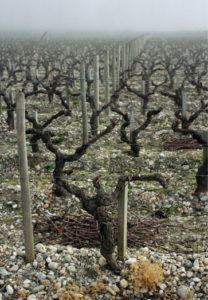
The château’s prime terroir, l’Enclos, overlooks the Gironde estuary: it is the river and the ocean that, over the centuries, have given the vineyard its geological complexity and, on a daily basis, ensure a mild climate. Most of Château Latour’s vines are planted on gravelly hilltops that stand 12 to 16 metres above the Gironde estuary. The fortunate combination of the Gironde, with layers of gravel on the surface and a clay subsoil, gives Château Latour’s terroir advantages that few other vineyards can claim.
There are two factors that have a benign influence :
• The proximity of the Atlantic, bringing the generosity of an ocean climate ;
• The immediate proximity of a large mass of water in the form of the estuary, protecting against possible cold spells early in the growth cycle and also enabling earlier ripening of the grapes, which can be an important factor as the harvests approach.
Acreage : 92 Ha
Age of the vines : 60 years old for the « Grand Vin »
Grapes : 76% Cabernet Sauvignon, 22% Merlot, 2% Cabernet Franc & Petit Verdot
Cultivation :
Nearly seventy people currently work at Château Latour. This 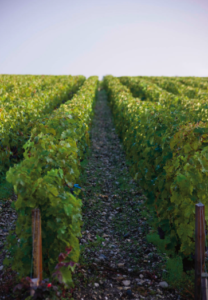 is higher than the average figure per hectare for estates in the Médoc and is justified by the extremely meticulous care that is taken in the vineyard and during the maturing process. Many employees, who follow in the footsteps of their parents or grandparents, have been working with pride and devotion for many years at the property, enabling the enrichment and passing on of their precious knowledge.
is higher than the average figure per hectare for estates in the Médoc and is justified by the extremely meticulous care that is taken in the vineyard and during the maturing process. Many employees, who follow in the footsteps of their parents or grandparents, have been working with pride and devotion for many years at the property, enabling the enrichment and passing on of their precious knowledge.
Pruning, attachment to trellis wires, ploughing, trimming of excess foliage and green harvests are all crucial for optimum growth and the selection of the best grapes.
The preservation of this magnificent heritage also involves the replacement of dead or accidentally damaged vines by new, young vines. This technique, known as « complantation », accounts for about 3% of the vines every year. It helps to maintain the potential quality and yields of the plots.
More generally, in 2009, Château Latour’s teams began a review of the vine growing methods in place that has led, over the years, to profound changes in practices in the vineyard and the ways that the vines are protected. This has involved a reintegration into their practices of an understanding and respect for the balance between the vines, the soil and the environment, with a view to achieving an optimal expression of the terroir in the wines.
Since August 2015, the entire Château Latour vineyard has been managed according to the principles of organic farming.
Harvest : manual
The Wine making process :
The vat room was fully renovated in 2001. It now consists of more than 80 stainless steel vats of various sizes (from 164 hl to 12 hl) enabling grapes with the same profile to be vinified together and for all the experiments to be carried out with the precision necessary for a better understanding of the subtleties of the terroir. The young wine remains in temperature-controlled vats for about three weeks: enough time to extract all the flavours and potential treasures contained in the grapes.
Fermentation
After running-off, in which the wine is separated from the solids or marc (essentially all the grape skins and seeds) and transferred into clean vats or barrels, the malolactic fermentation takes place during the following month. During this stage, the wine softens, developing roundness and precision. Meanwhile, the marc is pressed and the resulting press wine is matured separately in barrels, pending the blending stage. Once malolactic fermentation has been completed (between the end of November and January), the wine can then be transferred to barrels to start the maturing process.
Maturation
The wine is matured uniquely in French oak barrels from the forests of central France. The barrels are renewed every year for the Grand Vin. The wine stays in the barrel cellar for the first year until the beginning of the summer following the harvest. During the early months, rather than being hermetically sealed, the barrels are loosely stopped with a glass bung to facilitate a very slow exchange of gases between the wine and the atmosphere. The level of the wine in the barrel gradually goes down due to absorption by the wood and evaporation; the barrels are topped up twice a week in an operation called ouillage.
A year after it has been put in barrels, the wine is clarified using egg white, with one to six egg whites per barrel, depending on the wine and the vintage. This very old technique enables any particles still in suspension in the wine to be drawn down to the bottom of the barrel and removed. A final racking about 45 days after this fining separates the bright, clear wine from the lees.

Grand Vin de Chateau Latour Pauillac 1er Grand Cru Classé
Overview: Château Latour’s Grand Vin is made exclusively from “vieilles vignes”, an average of 60 years-old, in the Enclos. Gravettes, Sarmentier, Pièce de Château… these are the names of some of the finest plots that express the character of the terroir and forge the wine’s identity every year.
Terroir: The heart of the Enclos is the only terroir that, every year, can produce the depth, elegance and concentration that we expect of the Grand Vin. It is here that the Cabernet Sauvignon (accounting for more than 90% of the blend) can achieve optimal expression in terms of color, richness, and freshness. These wines need time – often a decade- before they begin to be ready for drinking.
Grape Varieties: Cabernet Sauvignon, Merlot, Petit Verdot
Tasting Notes: In great vintages, the power and energy of Château Latour’s wines enables them to continue to develop for several decades with ease. The bouquet and impressions on tasting gradually evolve, becoming increasingly complex, ultimately reaching a peak, after which the tannins soften and then the wine slowly declines. Beyond the pleasure of drinking them, these wines can produce powerful feelings and unforgettable moments. Château Latour is also known for having the ability to produce fine wines even in difficult years.
Cellaring Potential: In great vintages, the power and energy of Château Latour’s wines enables them to continue to develop for several decades with ease.
2011 Reviews: “This has a gorgeous core of steeped plum, boysenberry and black currant coulis flavors, backed by a prominent graphite note that drives through the lengthy finish, where extra hints of anise and sweet tobacco flitter in the background. Regal. Best from 2018 through 2035. 5,835 cases made.”-96pts, Wine Spectator
2007 Reviews: “A big and powerful wine, with tannins that are compact and dense. The dryness of the tannins go right to the core, surrounded by chocolate, sweet fruit and dark berry flavors. The wine is well structured, big and bold, with plenty of firmness promising aging.”-95pts, Wine Enthusiast
2003 Reviews: “Administrator Frederic Engerer says the 2003 is “the sexiest Latour ever made”…The wine is very ripe, but not over-ripe, offers great freshness, and lots of creme de cassis and camphor as well as hints of blackberries and chocolate. Dense, thick and unctuously textured, this staggering Latour is undeniably the most sumptuous, opulent wine made here since the 1982 or 1961.”-100pts, Wine Advocate

Les Forts de Latour
Origins: Les Forts de Latour takes its name from an historic plot in the Enclos. The wine was first labelled with this name in 1966 and constant work on developing its quality has resulted in its achieving the level of a Médoc Grand Cru Classé.
Terroir: This wine is produced from vines planted in the following locations: at the edge of the Enclos; some plots that could be used in the Grand Vin may finally be included in the Forts de Latour blend, depending on how their quality is judged during the blending tastings; plots located outside the Enclos, in Cru Classé areas of Pauillac (These consist on the one hand, of plots such as Piñada, Petit Batailley and St. Anne, which have belonged to the estate for more than a century and whose vines benefit from a high average age (around 40 years), synonymous with quality. And on the other hand, of a seven hectare island of vines in the commune of Artigues on gravel terraces, which was acquired in 2005. Plus a handful of plots (about 5 hectares) acquired in 2012.)
These various blocks of plots present very different terroirs, thereby offering Forts de Latour more varied characteristics and flavor profiles depending on the vintage.
Grape Varieties: Cabernet Sauvignon, Merlot, Petit Verdot
Style: Les Forts de Latour is produced with the same meticulous care as the Grand Vin, both in the vineyard and in the winery. The only notable difference, apart from the origin of the grapes, is the proportion of new barrels (50 to 60%) used in the maturing stage. The blend for Forts de Latour can vary from one year to the next but there is always a higher proportion of Merlot (25 to 30%) compared to the Grand Vin.
2014 Reviews:
“Packed with the fruit of the vintage, this wine is bright and crisp. Its acidity and pure black-currant flavors are delicious, juicy, the tannins now sitting easily in the background. The wine, which comes from a specific parcel, is developing well and will be released after 2020.” – 93pts, Wine Enthusiast
Château Latour-Martillac
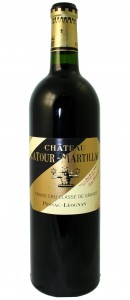 The Estate: Today the vineyard covers 42 hectares, of which 33 hectares are planted to red varieties and 9 hectares to the white. The terroir underfoot is the typical gravel of the region, of Pyrenean origin.
The Estate: Today the vineyard covers 42 hectares, of which 33 hectares are planted to red varieties and 9 hectares to the white. The terroir underfoot is the typical gravel of the region, of Pyrenean origin.
The Vines: The red vines have an average age of 30 years, and are 60% Cabernet Sauvignon, 35% Merlot and 5% Petit Verdot. The white are 55% Semillon, 40%
Sauvignon Blanc and 5% Muscadelle, with an average age of 40 years. The vines are pruned in the usual Bordeaux double Guyot manner and use two rootstocks well suited to the region.
Vinification: The harvest is manual, and the grapes transported to the chai in small plastic crates to minimise damage and subsequent oxidation, and the fruit undergoes selection on a sorting table before fermentation. The red grape varieties are destemmed, crushed and fermented in temperature-controlled stainless steel vats at around 28-30°C, and after a three week maceration go into oak, up to 40% new, for as long as 20 months. It is then fined with egg whites before bottling. The white wines, by contrast, undergo a gentle pressing before temperature-controlled fermentation and then going into oak, again up to 40% new, where it rests on the lees for up to 15 months.
Wines and Production: The grand vin is Château Latour-Martillac which produced 10,000 cases of red and 2,000 cases of white per annum. There is a second wine, largely the product of young vines, marketed as Lagrave-Martillac.
Château Le Gay
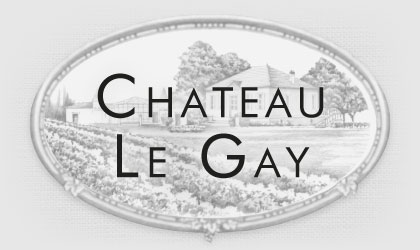
The Estate
Chateau le Gay vineyard has origins dating back to the 18th century, when it was known as Domaine de Gay, after the region that it was established on. Years later, the property was bought by the Greloud family, which led to the creation of Chateau Fleur. Both chateaus were eventually inherited by the sisters Theresa and Mary Robin in 1946 and would remain under their care for over 60 years. These institutions relied on the salesmanship and knowledge of Jean Pierre Moueix to manage the domain and market the wine. At that time, Chateau le Gay remained in the shadow of Petrus, the sisters Robin having no desire for notoriety. Following the death of Theresa in 1984, Christian Moueix assumed management of the estate.
After the death of Robin Marie in 2001, Lafleur passed to the heirs of the sisters Robin-Jacques and Sylvie Guinaudeau-who were then forced to sell. Catherine Pere-Verge, heiress of Cristalleries Arques and owner of the castle Montviel in Pomerol since 1985, acquired le Gay in 2002. She rebuilt the winery in 2003 and sought the services of Michel Rolland, the famous oenologist.

Manoir de Gay
Location: Situated on the plateau of Pomerol, adjacent to Petrus and Lafleur
Production Area: 10.5 hectares in one unique holding
Soil: Clay and gravel soils
Grape Varieties: 90% of Merlot, 10% Cabernet Franc
Average Age of the Vines: 40 years on average, the young vines planted in 2006 produce Le Manoir de Gay
Viticulture: Pruning adapted to each vinestock, de-budding and green harvesting on the young vines. Leaf thinning in 2 phases.
Vinification: Manoir de Gay has been vinified in cement vats since 2014
Aging: The same French oak barrels used for micro-vinification will house the wine for 18 months for malolactic fermentation and aging.
Annual Production: 21,000 bottles (based on a yield of 35 hl/ha)

Château le Gay
Production Area: spreads over 10.5 hectares in one holding
Soil: Clay and gravel soils
Grape Varieties: 90% Merlot, 10% Cabernet Franc
Viticulture: Pruning adapted to each vinestock, de-budding and green harvesting on the young vines. Leaf thinning in two phases.
Vinification: Hand-picked harvest in small cartons, double sorting table before de-stemming then sorted berry-by-berry, cellar; Micro-vinification in new oak barrels with a long period of cold maceration
Aging: The same French oak barrels used for Micro-vinification will house the wine during 18 months for the malo-lactic fermentation and ageing.
Annual Production: 20,000 Bottles
2008 Reviews: “Racy blackberry and graphite notes are framed by light toast and mineral in this vibrant, expressive red. The ripe tannins are well-integrated and give backbone to the plush texture. There’s beautiful balance, with depth and drive. Drink now through 2020. 1,500 cases made.” – 92pts, Wine Spectator
“One of the top successes of the vintage, the 2008 Le Gay, a blend of 90% Merlot and 10% Cabernet Franc (13.5% alcohol) was produced from tiny yields of 25 hectoliters per hectare. Bottled unfined and unfiltered, it exhibits a dense purple color as well as a sweet nose of spring flowers intermixed with blueberries, blackberries, dark raspberries, crushed rocks and white chocolate. Full-bodied, super intense and extremely promising (although it is unusually backward for a 2008), it will benefit from 5-7 years of cellaring and may merit an even higher score in a decade or so. It should last for 30+ years, making it one of the longest-lived wines of the vintage.” – 94pts, Wine Advocate
Château Le Pin
The Estate
Although Chateau Le Pin is unclassified and a relatively young winery, its wines are some of the most expensive in Bordeaux, if not the world. It takes its name from a single pine tree planted on the property near the winery.
The estate was owned by the Loubie family from 1924 to 1978, and during that time the grapes grown there were either sold or blended. In 1978, the property was purchased by the Thienpont family and in 1979, the first vintage of Le Pin was produced. The Thienponts had to invest much time and money into the winery prior to beginning production as the facilities and vineyards were in extremely poor condition.
The fact that the production area and facilities at Le Pin are tiny compared to other wineries in Bordeaux certainly increased the value of the wine, but the price shot up considerably after Robert Parker lauded the 1982 vintage. His high praise caused collectors to seek out the winery and as a result, a bottle of Le Pin is now viewed as a luxury item and can sell for thousands of dollars.
Over the years, the Thienponts have increased the size of the production area incrementally, as in 1984 when Jacques Thienpont purchased 0.6 hectares of land which were converted from vegetable garden to vines. A modernized chateau and wine making facility were constructed in 2012. Today, Alexandre Thienpont manages the estate with Jacques acting as winemaker and sales manager.

Château Le Pin Pomerol
Location: Le Pin is situated near the Catusseau village
Production Area: 2.7 hectares
Terroir: Clay with deep gravel and sand with deposits of iron oxide in the soil. Excellent elevation on the Pomerol plateau.
Grape Varieties: Almost 100% Merlot, with several Cabernet Franc vines co-planted in the vineyard. The Cabernet Franc is not a part of the blend of Le Pin.
Average Age of the Vines: 35 years of age, with some older vines in the mix that date back to the 1950’s.
Plant Density: 6,000 vines per hectare
Vinification: Le Pin conducts malolactic fermentation during the vinification process, and in fact they were most likely the first, or one of the first, to use this method in Bordeaux. It seems that this was not a conscious decision however, and the use of malolactic fermentation occurred by accident due to a lack of available fermentation tanks during their first years of production. The resulting wine turned out very well indeed, so the practice was maintained over the years. The wine is vinified in several small stainless steel tanks and is moved about the facility by gravity. Malolactic fermentation is done in oak barrels.
Aging: In 100% new, French oak. The wine is blended prior to bottling.
Annual Production: 400-600 cases
Cellaring Potential: 10-35 years after the vintage
Serving Suggestion: Young vintages may be decanted for 2-3 hours, and 1 hour or less for older vintages.
2007 Reviews: “Shows sweet herb, dark berry and light smoke on the nose. Full-bodied, offering chewy tannins and plenty of new wood and fruit. Tight and reserved, with plenty to come.”-90pts, Wine Spectator
1999 Reviews: “It is exotic and sexy, with a cunning display of super-ripe mocha and toast-infused, jammy black cherry fruit, low acidity, and a savory personality…It is a luxuriously rich, decadent 100% Merlot…”-93pts, Wine Advocate
Château Le Prieuré (Certified Organic / Biodynamic)
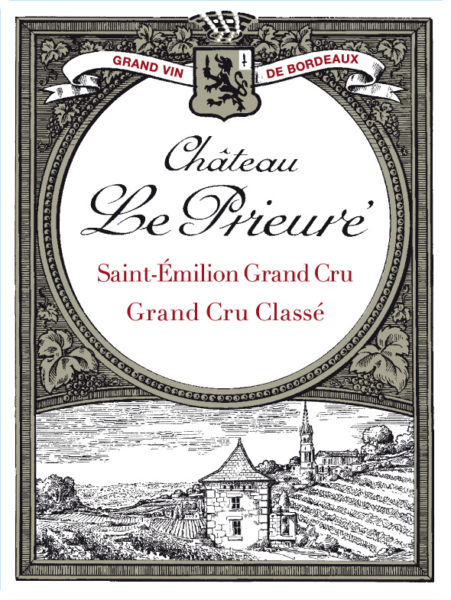
The Estate
Formerly called Premieur Cru des Cordeliers, renamed in 1897, Château Le Prieuré has been part of the elite, the Grands Crus Classés, since the beginning of the classification system in 1955. 6,24 hectares on limestone plateau and south facing slopes overlooking the city of Saint-Emilion.

Délice du Prieuré Saint-Émilion Grand Cru
Appellation: Saint-Emilion Grand Cru
Technical Director: Pénélope Godefroy
Consulting Oenologue: Jean-Claude Berrouet
Location: Situated on a limestone plateau and hillsides facing south between Trottevieille, Troplong Mondot, Pavie-Macquin, to the east of the village of Saint-Emilion
Soil: Clay-limestone soil on a base of clay and limestone from Castillon
Production Area: 6.24 ha
Plant Density: 6,300 plants / ha
Grape Varieties: 80% Merlot, 20% Cabernet Franc
Average Age of the Vines: 30 years old
Viticulture: Tillage using animal traction only. Certified Organic Ecocert (2018 first vintage certified). Biodynamic practices employed.
Harvest: Manually done only in small crates. Sorted in the vineyard and upon entry to the cellar.
Vinification: Vinification of the plot selections in thermoregulated, concrete vats with gentle extraction. Malolactic fermentation in barrels.
Aging: 11-13 months in barrel. It is in the privacy of a small cellar sheltered from the quarries that the wine of Château Le Prieuré flourishes.
Tasting Notes: The bouquet offers delicate aromas of licorice and black fruits. The mouth feel is creamy and balanced, with a complex and lingering finish. It leaves a subtle floral imprint on the palate, voluptuous, elegant, and fresh. This wine is the perfect reflection of the limestone terroir.




